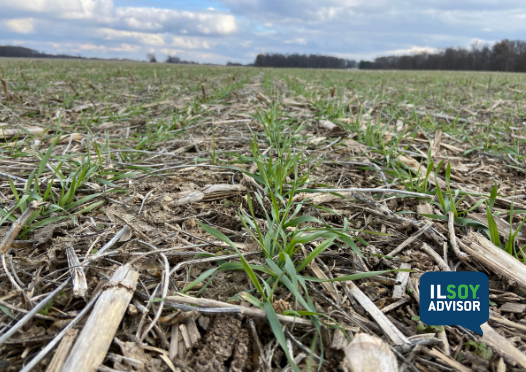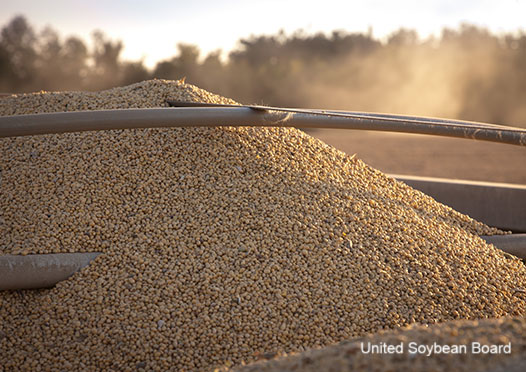ILSOYADVISOR POST
Plant & Soil Health: Lessons Learned at the Conservation Cropping Seminar
Are you curious about cover crops or want to learn more about more efficient nutrient management?
With more interest in soil health, the Champaign County Soil and Water Conservation District is holding a series of Conservation Cropping Seminars featuring cover crop specialists, suppliers and researchers, as well as local growers sharing tips and answering farmers’ questions about bringing conservation practices to their operations.
ISA attended the first Conservation Cropping Seminar in Sycamore to provide this report. There’s one more chance to attend an event in Macomb, Ill., to learn more and ask your conservation cropping questions. Register for the Feb. 18 seminar here.
Cover crops and spring nutrient applications to reduce nutrient loss—Shalamar Armstrong, Ph.D., assistant professor at Illinois State University, shared results from his nutrient utilization research. Armstrong used cover crops to manage nutrients over three years and tested 1) using cover crops to manage fall-applied nitrogen, 2) switching nutrient applications to spring and 3) using cover crops and spring applications to spring. He found that all practices reduced nutrient losses, but that the third, cover crops and spring applications, had the fewest losses and made a significant difference in underground N distribution.
Reducing compaction with cover crops and aerial planting—Baptiste Tellier, vice president at Fall Line Capital, shared results of his cover crop and planting research. Tellier explained that silty soils harden on top and often lead to runoff. Through a double crop rotation followed by a cereal rye cover crop, Tellier gained a 14% yield increase and saw worms on the farm for the first time in years—a sign of improved soil health. He also experimented with aerial planting of cover crops to offset the compaction caused by heavy tractor paths. Those results will come in spring 2015.
Weed and herbicide management—Gordon Roskamp, Ph.D., adjunct professor at Illinois Central College, shared the importance of soybean-herbicide selection for cover crops, as well as his experience using cover crops to manage weeds. Roskamp explained that rye grass, radishes and turnips were damaged by soybean-herbicide residue in his research, and growers need to examine the components of their common herbicides. He also said that cover crops help control winter annual weeds because they compete with them for soil space and sunlight. Some cover crop weed suppression can even carry over to spring.
Earthworms as evidence of soil health—Eileen Kladivko, Ph.D., professor of agronomy at Purdue University, shared research on systems for soil health. She explained common indicators of soil health—water infiltration, adequate aeration, no surface crust—but also explained that she uses the presence of earthworms as a key indicator of improving soil conditions. Earthworms improve soil quality because they create channels in the soil, improve tilth and incorporate organic matter into the soil. She said no-till practices improve earthworm populations and, with time, earthworms can do a large part of the tilling for us.
Benefits of successful cover crops—Hans Kok, agricultural consultant based in Indianapolis, shared the basics of successful cover crops. He explained that the typical soybean season lasts five months, leaving seven months of unused solar energy. Cover crops double the amount of time you have living roots in the ground. Kok also explained the importance of cover crops feeding the soil to boost soil biology. In his research, he found that cover crops led to weed control, reduced nutrient robbing, nutrient carry-over in the soil, erosion protection and enhanced water-holding capacity.
Visit the Illinois Farm Bureau website to watch footage of the Sycamore event and to listen to the local farmer panel.
Share your conservation cropping experiences or questions in the comments section below.





Comments
Add new comment